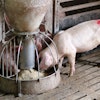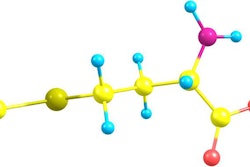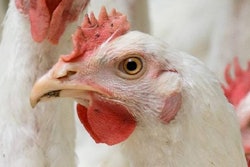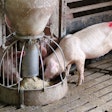
Feeding 2 methane-reducing additives at the same time may greatly reduce cattle emissions
Adding more than one methane-reducing feed additive to cattle diets could be a winning strategy for reducing emissions from cattle production, according to a new study from Canada’s Lethbridge Research and Development Center. However, results may vary according to the exact combination of ingredients used.
In the study, cattle fed a combination of canola oil and 3-nitrooxypropanol (3-NOP) produced 51% fewer methane emissions, compared with a 24% reduction in cattle fed 5% canola oil, and 28% in the cattle that received 3-NOP alone. The results, according to Lethbridge Research and Development Center research scientist Karen Beauchemin, suggest that methane-reducing feed ingredients can be combined to achieve an additive reduction of emissions — with a few possible caveats.
The Lethbridge study, published in the March issue of the Journal of Animal Science, only evaluated the combination of canola oil and 3-NOP, so it’s not certain that other combinations would produce similar effects, Beauchemin said. However, she said she suspects other combinations are possible, so long as the additives chosen have different modes of action in the rumen.
Methane is produced in the rumen by a group of microbes that are naturally present there, Beauchemin explained. 3-NOP, a synthetic chemical compound, acts as a methane inhibitor by disrupting the ability of these microbes to create methane. On the other hand, canola oil, like many other lipids, is toxic to certain methane-producing bacteria and protozoa. Including it reduces the number of microbes producing methane in the rumen.
When 3-NOP and canola oil are used at the same time, Beauchemin said, it appears that each additive is free to work in its separate way without interfering with one another. The canola oil eliminates some of the methane-producing microbes, while the 3-NOP stops those that remain from producing so much methane. This potentially allows producers to combine additives and achieve emissions reductions beyond what is possible with a single ingredient.
Although more tests are needed to validate other combinations, Beauchemin said she didn’t think the additive effect would be limited to canola oil and 3-NOP alone. For example, the red seaweed Asparagopsis works in similar fashion as 3-NOP, blocking microbes’ ability to produce methane. Combining Asparagopsis with 3-NOP might not result in increased emissions reductions because they work in a similar way. But combining Asparagopsis with canola oil, Beauchemin said, might be an interesting experiment to try.
At present, Beauchemin said producers won’t be able to replicate the experimental diet with 3-NOP and canola oil, because 3-NOP is not yet approved for use in commercial animal diets.
She also cautioned against including very high levels of canola oil in cattle diets. While increasing lipid inclusion is an effective way to reduce methane emissions, it also decreases feed efficiency. The tradeoff may not be worthwhile at inclusion levels higher than 5-6%, Beauchemin said.
















